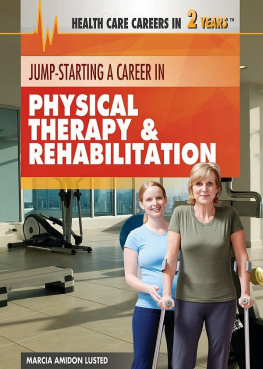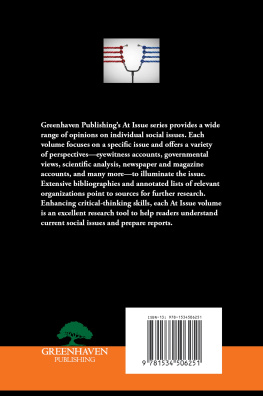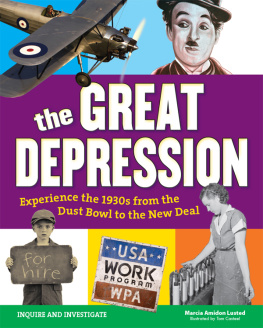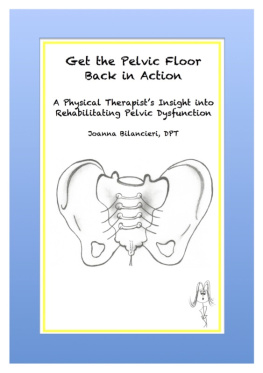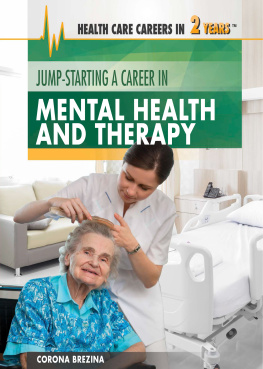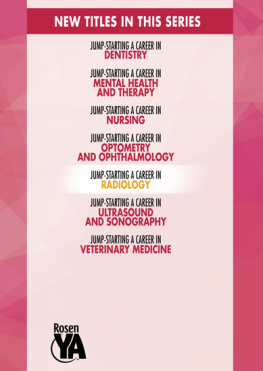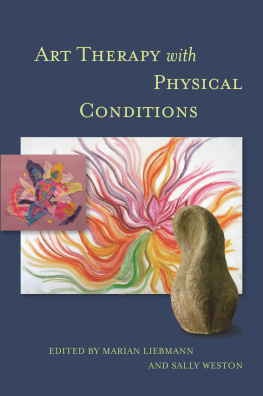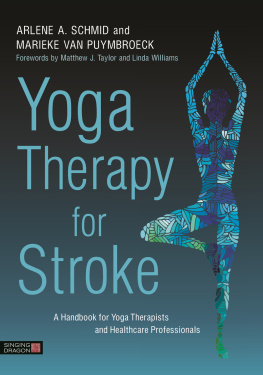
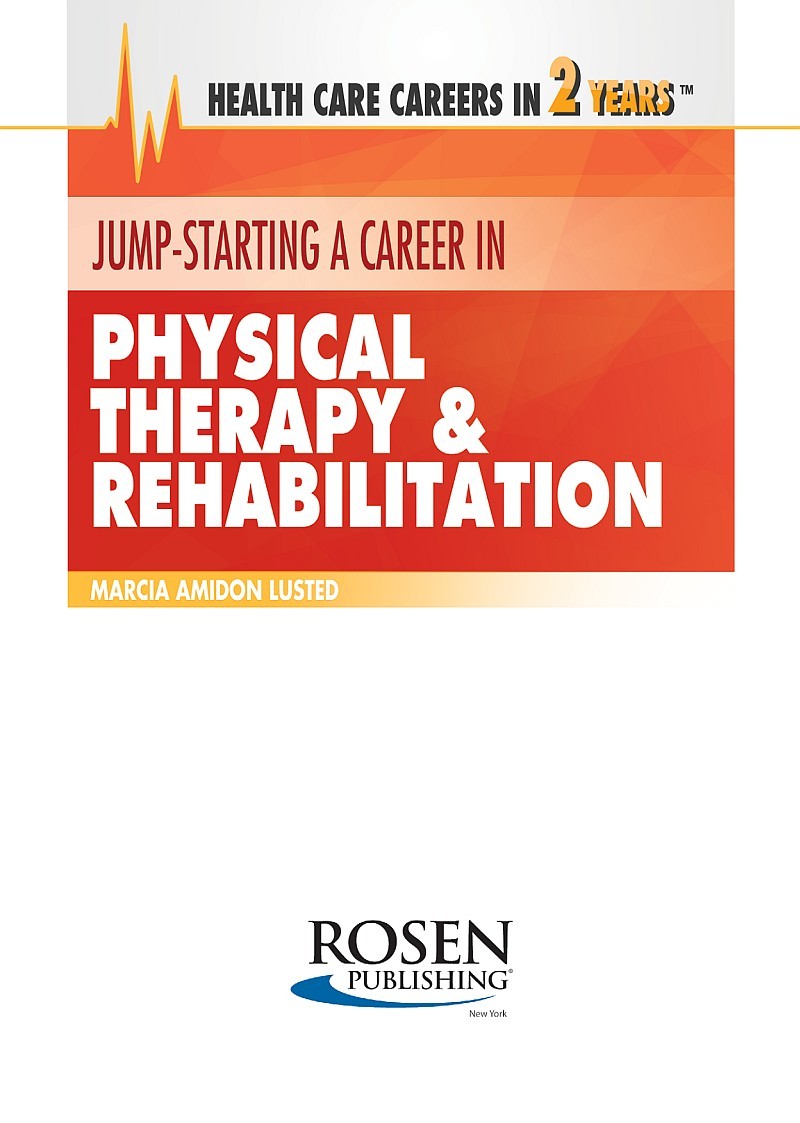
Published in 2014 by The Rosen Publishing Group, Inc.
29 East 21st Street, New York, NY 10010
Copyright 2014 by The Rosen Publishing Group, Inc.
First Edition
All rights reserved. No part of this book may be reproduced in any form without permission in writing from the publisher, except by a reviewer.
Library of Congress Cataloging-in-Publication Data
Lusted, Marcia Amidon.
Jump-starting a career in physical therapy & rehabilitation/Marcia Amidon Lusted.First edition.
pages cm(Health care careers in 2 years)
Audience: Grades 7-12.
Includes bibliographical references and index.
ISBN 978-1-4777-1695-3 (library binding)
1. Physical therapyVocational guidance. 2. Physical therapy assistants Vocational guidance. 3. Occupational therapyVocational guidance. I. Title.
RM705.L87 2014
615.82023dc23
2013013960
Manufactured in Malaysia
CPSIA Compliance Information: Batch #W14YA: For further information, contact Rosen Publishing, New York, New York, at 1-800-237-9932.

INTRODUCTION
I ts eight oclock in the morning and the physical therapy assistant has just arrived at the physical therapy department of a large hospital. There are already patients in the waiting room. Some of them have visible injuries, such as arms in slings, or use wheelchairs or crutches. Others dont appear to be injured. Some are elderly, some are young adults, and some are children or teens. Some are seeking help with injuries or the aftermath of surgery, while others are trying to avoid having surgery.
The physical therapy assistant looks at the list of patients for the day and reviews it with the supervising physical therapist. Each returning patient has an established plan of care, developed by one of the physical therapists on staff. The plan outlines what the patients physical problem is and how the therapists will treat that condition. There is also a new patient on the list. She will have an initial evaluation to determine her problem before a plan of care is created.
The physical therapy assistant sets up the private area where the first patients therapy will take place. The assistant applies laser therapy to a sore muscle under the supervision of the physical therapist, who then massages it to loosen the muscle and alleviate the pain. The next patient is treated in a large open room with equipment such as weights, arm and leg bicycles, railings for assisted walking, and a small trampoline. This patient needs help exercising an injured leg that recently underwent surgery. The supervising physical therapist carries out this particular therapy, and the assistant documents everything that takes place in the patients record on a laptop computer.

Physical therapy assistants help patients exercise limbs after injury or surgery.
The next patient is new, and the supervising physical therapist conducts the evaluation of the womans injury. The assistant enters information in the patients record as the therapist does the evaluation and listens as the therapist and the patient discuss what treatments and procedures will be used to help her. They also discuss how frequently and for how long the patient will come in for treatment and what the patients goals are for the therapy.
The end of the day comes quickly, and the physical therapy assistant, with the help of the physical therapy aide, cleans up the facility and gets it ready for the next day. When the assistant leaves at 5 pm, it is with the satisfaction of having spent the day helping people reach their therapy goals and feel better. All of this is possible with just two years of higher education.

Exploring the World of Therapy and Rehabilitation
P hysical therapy and its related career, occupational therapy, can be very appealing to those who want a steady, well-paying job that also involves helping people. What is the difference between the two? While both careers involve helping people regain physical strength or recover from a physical problem, each has a specific focus.
A Difference in Focus
Professionals in the physical therapy field work with patients who have had injuries, illnesses, or surgeries, or who have other disabling conditions. They may have lost movement in parts of the body, such as the arms, legs, or back. They may have been in an automobile accident or sustained a sports injury, or they may suffer from a condition such as cerebral palsy or arthritis. Some may be experiencing a physical condition that they are hoping to heal without surgery. These patients need help regaining movement and managing pain. Treatment might include exercise, massage, ultrasound or laser treatments, and heat or cold therapy.

Equipment such as weights can help patients strengthen weak muscles.
Like physical therapy, occupational therapy helps people who have decreased physical mobility because of an illness, accident, injury, or surgery. However, the focus is on recovering the ability to perform everyday activities, rather than alleviating pain or healing the injury. An occupational therapist also works with individuals with mental or emotional disabilities as well as physical ones. Overall, the goal of occupational therapy is to help people improve their quality of life by regaining the ability to do everyday tasks without assistance. These things might be as basic as the ability to bathe or cook for themselves. Other patients might work on regaining skills for holding down a job after a work-related injury.
SPEECH AND LANGUAGE THERAPY
There is another type of therapy career: speech and language therapy. Therapists called speech-language pathologists help patients with communication disorders, such as stuttering, difficulty pronouncing words clearly, or problems with pitch or tone. They also help people with swallowing disorders. Their patients may have receptive disorders (difficulty understanding what other people are saying) and expressive disorders (difficulty putting words together correctly or using language in a socially acceptable way). Jobs as speech-language pathology assistants or aides do exist, but regulations and requirements for these careers vary from state to state. Those interested in this field can learn more through the American Speech-Language-Hearing Association (ASHA), at http://www.asha.org .
Like physical therapy, occupational therapy often includes physical movement, such as stretching and relaxing. However, it also includes hands-on skill building, such as learning how to move from a bed to a wheelchair or relearning how to cook in a simulated kitchen setting. Many occupational therapy facilities have simulated work and home settings in which patients can practice daily skills.
Getting Started: The Aide and the Assistant
There are several levels of careers in physical and occupational therapy. The first level is that of aide. Being a physical or occupational therapy aide does not require any higher education, only a high school diploma. For both types of therapy, aides perform tasks such as cleaning the therapy facility, setting up treatment areas, and helping patients move to and from their treatment area. Typically, aides are not involved in hands-on patient care. They might do clerical work, such as scheduling appointments and answering phones, or helping patients with insurance forms and billing.
Next page
